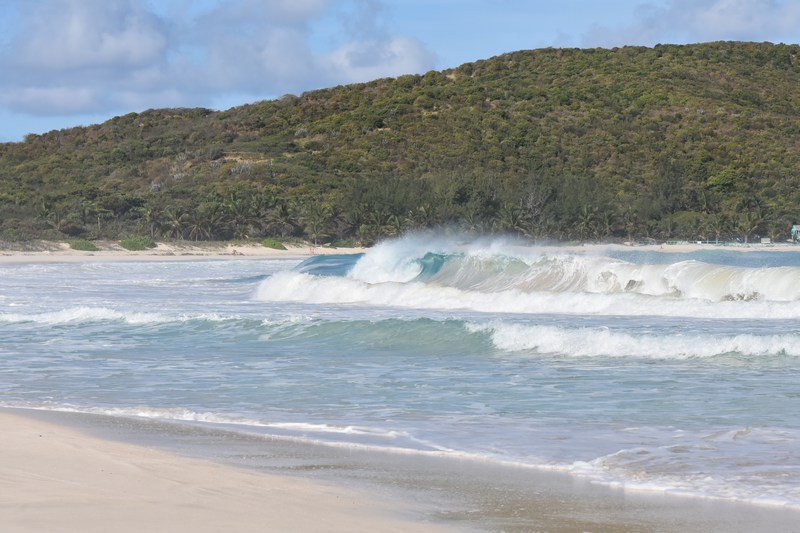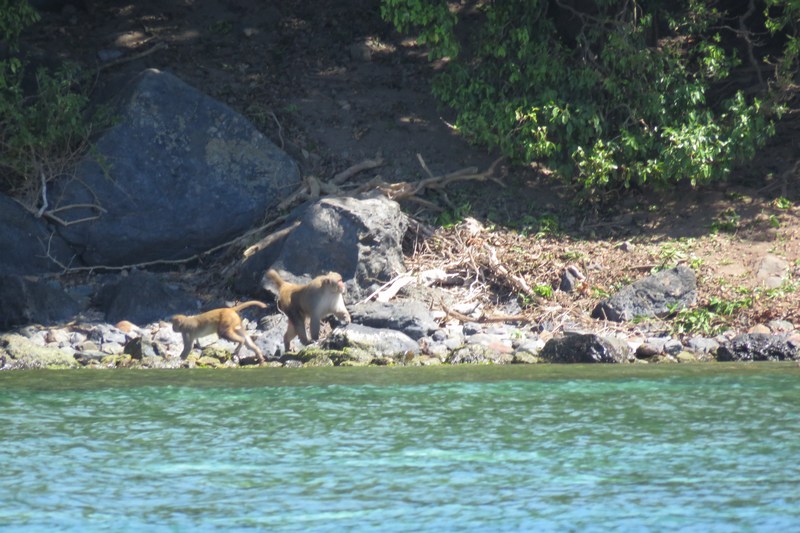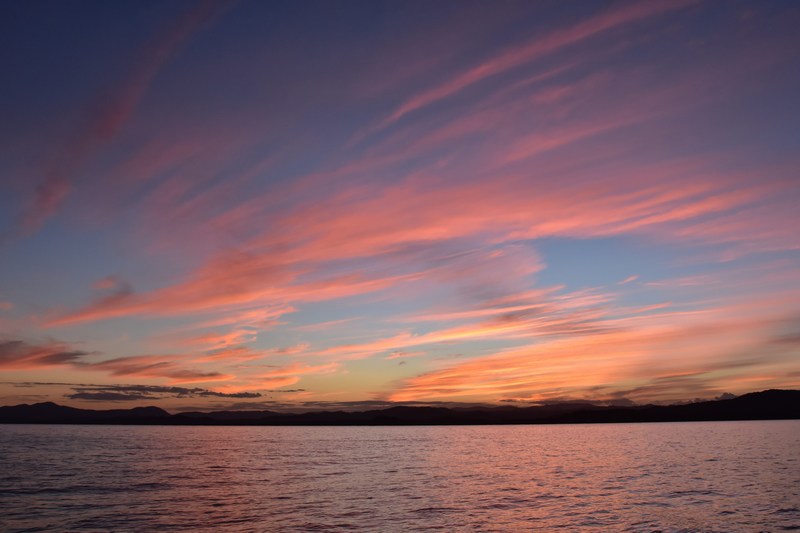Culebra to Ponce 17/02/2017

|
We are leaving Puerto Rico very slowly. Left Culebra, sleepy, quiet,
everything charming; obviously this means no facilities, but we
stocked up with fuel, water and some food on the mainland.
Just visited one of the top beaches
in the world, although we have no idea who gets to pick.
Flamenco beach is truly beautiful, but red flagged and a surf
beach.
After days of a long snorkel followed by lots of lazing we are going to Ponce, but with a daytime break. Navigation in Puerto Rico is interesting at the best of times. The sea flits from 20m to 2m with unlit and unmarked reefs, rocks and small islands everywhere. So we travelled by day through a passage where rocks and islands are on both sides of the boat, aiming to finish the journey to Ponce overnight after an afternoon stop, so that all the hazards are on one side in the dark, with very deep water on the other. Obviously Americans not only drive on the wrong side of the road, but they have reversed the channel buoyage system colours as well, compared to Europe, with Red Left Returning as the reminder. The direction of buoyage is actually determined by the direction of the flood tide, which is not obvious on the east side of an island. Just to confuse matters further the chart shows two green channel marker buoys positioned across the flow. Arriving at this point reveals one doesn't exist – hence why all tricky navigation needs to be done in daylight.
The only interesting looking anchorage positioned well for our afternoon stop was Monkey Island (Cay Santiago). Puerto Rico was used by the Americans for experiments and testing. The US Navy used Culebra for target practice so our chart shows large areas marked 'Danger, unexploded ordnance', while this anchorage was off an island used for primate experimentation of some sort. As the pic shows this is a Dr Moreau style island with a bunker sitting in the centre, which sets your imagination running wild to Planet of the Apes scenarios. Anyway, the monkeys now freely roam the island. There are big yellow signs all around the island warning everyone not to set foot on the island or feed the monkeys. The island is a very bizarre tourist attraction with a motor boat, 3 lots of jet skis and a group of kayakers visiting. The aim of these visits seems to be to get close enough to the island so that the 'monkeys' (actually baboons) come out of the trees to drive them off by bouncing off the signs and posturing aggressively. They then leave, thereby training the baboons that this aggressive behaviour works. The baboons are very vocal and love bouncing up and down on the metal roofs, making their own trampoline. Apart from scientists from the Santiago Cay Primate Centre, no-one sets foot on the island. The primate centre boat turned up and two men clad in overalls, each with a small rucksack slowly walked up the island. They then reappeared with 3 groups of other scientists. They all stayed very close together and very quiet. The monkeys are aggressive and will
bite so we happily snorkelled of the boat, had a roast chicken
dinner, watched the beautiful sunset and left for an easy
overnight
motor to Ponce.
|




